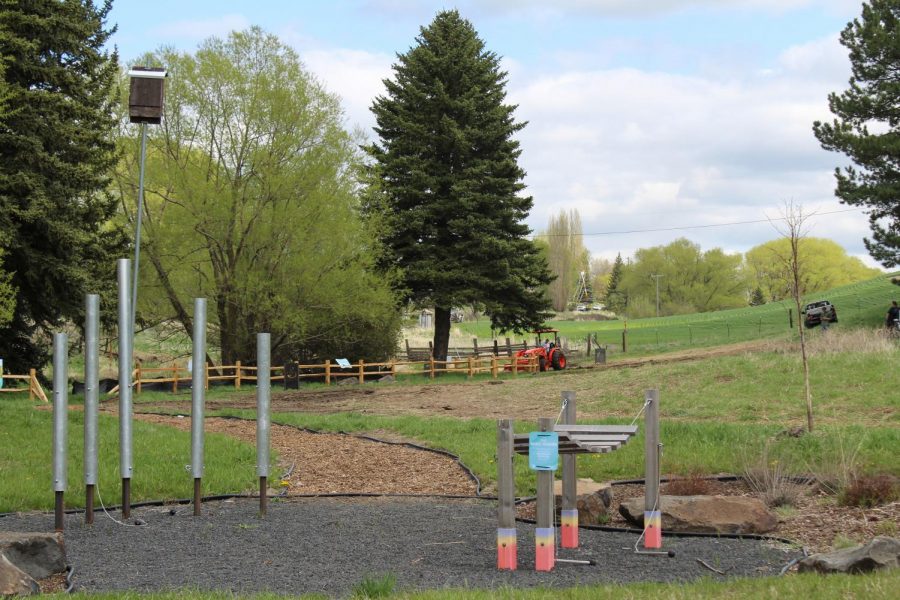Pullman plans to make some parks more accessible
Mary’s Park to include soft-surface floor, toy trains, forest-themed area
April 18, 2019
The city is looking into the construction of a more accessible playground to improve paths and recreation components at Mary’s Park and Sunnyside Park throughout the year.
Pullman Parks Superintendent Alan Davis said Mary’s Park at Johnson Road will be an inclusive playground with a soft-surface floor. It will include toy trains and slides, and there will be a forest-themed section for older children.
“We are looking for our first kind of regional [ADA]-inclusive playground site,” Davis said.
He said there will be agricultural components like a children’s garden and backyard gardening demonstration areas.
The park will also have xylophones, chimes and conga drums for children, Davis said.
He said there will also be orchard fruit trees planted that will have a general walkway on one side and an ADA path on the other.
The park playground will be finished by the end of this year, Davis said, because it will take some time and effort to finish.
“Being in Pullman — there [are] a lot of hills, and there is not really a transition for an individual in a wheelchair,” Pullman Recreation Superintendent Kurt Dahmen said.
Davis said the tennis courts at Sunnyside Park will be resurfaced and repaired over the summer. One of the tennis courts will be turned into a pickleball court and will be open to the public this fall.
He said they will also implement an ADA-accessible path from the Southwest Cedar Street parking lot to a shelter and restroom at Sunnyside Park by September.
There will also be a paved road to connect from Southwest Cedar Street to the ADA-accessible path, he said.
He said they are also going to pave a path from Southwest Center Street and across Panorama Drive, which would take people up to the shelter.
Both park improvements are estimated to cost about $110,000, Davis said, and the ADA paths are estimated at about $150,000.
He said the shelter and bathroom cost about $460,000.
“We do not have a lot of ADA components in our city parks,” Dahmen said, “It is one of those things that we saw as a need to put in.”









